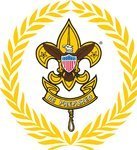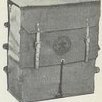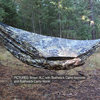Leaderboard
Popular Content
Showing content with the highest reputation on 09/11/20 in all areas
-
In the Quetico (Canadian side of BWCA) a good single tree is also hard to come by. We use a 2-tree method which does not require that "one perfect branch". Using two trees allows one to attach a 'biner to the center of a rope between the two trees, then hoist to that center well away from branches, trunks etc... Like all outdoors skills, one needs to know how to deal with changing conditions. What works in one area might not work in another.2 points
-
Thanks to @HICO_Eagle’s nods, I just realized, we were just two weeks to lockdown when I wrote this. The moral of the story: if your 1st years ask to mix, let them do so ASAP. You never know when the next wave will come.2 points
-
Skeptic, My experience is very different. My best sources were the newspapers. Houston's COH newspaper articles give a complete listing of earned merit badges and scout ranks (two attached). For Houston scout meetings, the troop scribes wrote up each week's meeting to be printed in the paper (one attached). Very cool to know exactly what happened at my troop's meetings from 1914 to 1924. Never asked my local council for anything because they donated 45 linear feet of historical records to the Public Library Archives. Most helpful were the Eagle scout records and the Annual Repo2 points
-
Since this discussion picking up again reprompted my interest, I did a little Googling. On the BSA licensing page (http://licensingbsa.org/trademarks/) they do list “Boy Scout uniform, insignia and emblems” on the list of example BSA trademarks, suggesting some level of trademark interest in the look of the uniform. In the brand identify guide (https://filestore.scouting.org/filestore/pdf/310-0231.pdf), they do flag specific hues as defined parts of the BSA branding (and helpfully put “Scouting” in front of each of them... e.g., Scouting Tan and even Scouting BSA Olive.). Not sa2 points
-
Historically, Scouts drew directly from and was formed around military traditions and structure. The merit badges frequently had either direct correlation or applicable though that has softened somewhat. There is a reason there is a wide range of commands, formations and activities that echo this. Likewise, the traditional development attributes from scouting up to very recently if not still so allowed enlisting members to have one upgrade rank on coming in. it seems modern parents may not be cognizant of these facts and in some cases bitterly refute or resent it. Be that as it may,1 point
-
We did the same thing on our several trips in Quetico. When we couldn't put the bag in the tree, the local outfitter taught us how to set up camp so that the tents were safe. There were other techniques as well I don't remember. The local's are glad to demonstrate before you leave. But, their first technique is hanging the bags. Canoe treks have the advantage of carrying bear boxes as part of the equipment list (which we never took). Backpacking is where good techniques are important. A good tree is usually a reliable source because there isn't typically limits like rivers or lakes in fin1 point
-
As I continue to probe for historical bits and pieces for our local area Scouting, I have discovered one seemingly fairly common thing. Most of the earliest units were formed at churches and often in conjunction with the Y. Since our council did not exist until 1921, tracking down records is pretty hard, though we have found a few through National. Ironically, we know that we had a unit at the Congregational church in 1910, and that it was there in some manner until 1914. But, other than the newspaper notice of its formation in 1910 and some records of the church officially dropping it in1 point
-
In the article, Skurka does a good job explaining different techniques for different circumstances.1 point
-
From the Troop 11 History, Houston, Texas (1990), sponsored by First Presbyterian Church. "OSCAR HIBLER BECOMES SCOUTMASTER The troop committee recruited church member Oscar Hibler to become scoutmaster in January 1949. Mr. Hibler had been ASM of Troop 16 at Sutton School. Troop 11 had been without a scoutmaster for three months. When Mr. Hibler took over, Troop 11 had fifteen active scouts and two active visitors. As Mr. Hibler recalls, the boys refused to wear uniforms and only wanted to play. His strong emphasis on scouting principles caused many to leave. Recruitment became a p1 point
-
I recently came across a well-researched history of the Four Lakes Council (The First 90 years: 1912-2002). And it got me thinking about other councils and whether or not similar books existed in other parts of the country. As a Scout I lived in Georgia and Louisiana and, thus, experiencing Scouting in the Atlanta Area Council and the New Orleans Area Council, which as been the Southeast Louisiana Council. The Four Lakes Council merged with the Sinissippi Council in 2006, I think, and both became the Glacier's Edge Council. But it is certainly fun and intersting to read about and see1 point
-
I will tell you like I told my Den Leaders. Don't do that. The Scoutbook for Den Leaders is horrible garbage.1 point
-
Is it possible? I have said many times over the years on this forum that adult run programs are usually advancement programs because they are so easy to follow. They don't require much personal guidance or coaching because the results of the scouts actions are obvious to everyone, especially the scout. The uniform is the same, most Eagle Mills are the best dressed programs because a uniform is basically a check list. Patrol method program are more ambiguous because counseling is deeper into how to make right decisions based on the Scout Law. Uniforming a patrol method troops is less tidy becau1 point
-
Could be, but this seems to be more optimistic. I mean, right now it is raining ash in my town and it's supposed to snow tonight. The tomatoes are history. I guess you're saying people do, in fact, enjoy the outdoors. That and the fact that the BSA is hurting is quite a paradox. My neighbor has scout aged kids and they go camping every few weeks in the summer. And yet they have zero interest in scouts. While I agree, I'm starting to think there's more to it. Is it possible they're so hands on because the advancement side of the program is so well defined? There are requ1 point
-
The Topic Drift Police may arrive directly. Yes, more could be done than what BSA effectively advocates by misstatements and omissions, but not easily. All the good words about Scouting methods are still there - scattered about - if one knows what they mean taken together. However, decades have passed since they were combined in any coherent message - no chapter, no article, no check-list. And the descriptions of methods are routinely contradicted by BSA statements by the unknowing "professionals": "Patrols are one component of what we call youth-run, or youth-led, troop." No,1 point
-
Statistically BSA looses more scouts in the first year of the troop program than any other age group. It’s been that way at least from the 60s, which was as far back as I could find. But, I believe it goes back much farther because the reason for the huge drop is the large change in culture expectations (independent decisions) between the two programs. Cubs are still led and guided by adults during the program, while Troop scouts are expected to make Independent decisions about their health and safety in the cold dark rainy woods. Even making a menu for the next campout can be stressful.1 point
-
This can be the rebirth of the patrol method. My unit tried 1 Troop zoom meeting. It was a wreck. We have, however, seen patrols going hiking, fishing, biking, etc. Our SM and SPL have, in effect, "given up" on troop level activities and plan on patrol level events indefinitely (the only exception being a possible Court of Honor). I say "given up" in quotes because they are looking at this as a really positive thing; you have PLs who have to step up and patrols with weak leadership or shiftless scouts being put on the spot and embarrassed/shamed. Our new unit patrol/crossover Ao1 point
-
This is where NSPs go wrong. As I mentioned earlier, no patrol should have rank advancement as it's goal. Broadly, the goal of a patrol is, according to Webster, " reconnaissance, security, or combat". A scout is, according to the same source, is " to reconnoiter." Therefore a scout patrol's goal is, in the purest sense of the term "reconnaissance." They are to observe and report. Obviously, at a youth level, that act of patrolling is scaled to their abilities. And for our program, the goal of the patrol is to go hiking and camping. The goal of the patrol leader is to qualify to take his/1 point
-
You're reading a lot into my words. What I am suggesting is scouting should not be like school If a crossover has the dedication an desire to master a rank a month, he can do so. His patrol leader who is still working on tenderfoot can test and sign off with the guidance of the TG. (Wow, a TG who actually guides instead of signing off!) The PL might learn something in the process. There is nothing lock-step to mastering Tenderfoot skills. Some scouts will be excellent with knots, others armed and ready for that 1st camp-out, others ready to start that month of phy1 point
-
It might help some if we stopped using academic sounding terms like University of Scouting.1 point
-
I often wonder about that. Does each and every skill have to have a "I'd like to be tested on xyz"? I remember a scoutmaster who did an annual canoe trip. He'd get each and every scout up to speed on canoeing before or during that trip. At the end if they did not have the canoeing MB, he awarded it. In that case, the SM saw the scout demonstrating the skills. If a leader (youth or adult) sees the scout do the skill as part of an activity, does the scout really have to say "I'd like to be tested on xyz"? Or can the leader just immediately sign off the requirement. I believe the l1 point
-
So very, very true. So much of Scouting today -- rank requirements and merit badges -- is presented in school format. A large part of that is due to how requirements are written. It is wrong, it is sad, and it is one of the reasons that Scouting is dying.1 point
-
I'm tired. Forgive me if I babble. "First Class First Year" ... It's about program planning. The stats may be self-fulfilling stats. Motivated scouts rank up quick and stay in. Scouts less interested won't earn and won't stay in scouts. It's absolutely not our job to pull kids forward. It's their job to rank job. We help. We inspire. We encourage positive experiences. We are there for our scouts. But it's their journey. It's about program planning. A troop that supports "First Class First Year" has a planned program that has "OPPORTUNITIES" for scouts1 point
-
New scout patrols: Webelos III at best. Usually a demotivator for new scouts. Some troops avoid these issues by providing outstanding leadership to the new scout patrols; most troops do not. Operation First Class: when this was first announced in '89, I was an ASM. My SM and I wrote a letter to National expressing our concerns and disapproval. We made a conscious effort to be polite. We received back a rather dismissive reply from an exec. The exec's opening sentence, if I recall correctly, ran thus: "I find it interesting when people complain about things they aren't really inf1 point
-
My thoughts. I. HATE. NEW. SCOUT. PATROLS! In 34 years of seeing them used, I have never seen it used successfully. Either the Troop Guide, or Patrol Leader as I was called when my troop was asked to try it out in 1986 before it became the recommendation in 1989, gets overwhelmed working with bunch of new Scouts by himself, or adults need to intervene so much that it becomes Webelos 3. OPERATION FIRST CLASS, as the idea was originally called in 1989, is based on skewed data. More on that later1 point
-
Regarding your final statement ... let me reassure you as calmly as possible: First Class First Year is a lie. Tell your crossovers and their parents the truth: it is hard to obtain First Class rank. The skills therein are difficult to master. Furthermore, for those crossovers and parents with Eagle in their sights, I remind them that I have not seen a difference in who earns Eagle based on how soon they earn 1st class. A large proportion of 12 y.o. 1st class scouts either quit or take 6 years to get to Life rank. A scout who finally earns 1st class at age 16.5 has accumulat1 point
-
Sadly, There were no Council records except for a document in 1914, one each in 1923, 1924, 1925, 1926, 1927 and 1928. So, I had to find the information to build the history and did so in the only other way possible...the Dallas Morning News archive. Your answer is to scour the local news archive and you'll get what you need. Copies of "Where Character is Caught" will be available at the Circle Ten Council hq (www.Circle10.org for $25 in softcover and ask for Wendy Kurten).The Scout Executive had no intention of making this a fundraiser. He wanted it to promote the glorious history1 point
-
Actually, you need to look a little deeper to see the exact age requirement. In order to earn the Arrow of Light, one must be 10 years and 6 months. If not having earned the AOL, one must be 11 to join. So really 10.5 is the youngest one may be to join a troop.1 point













